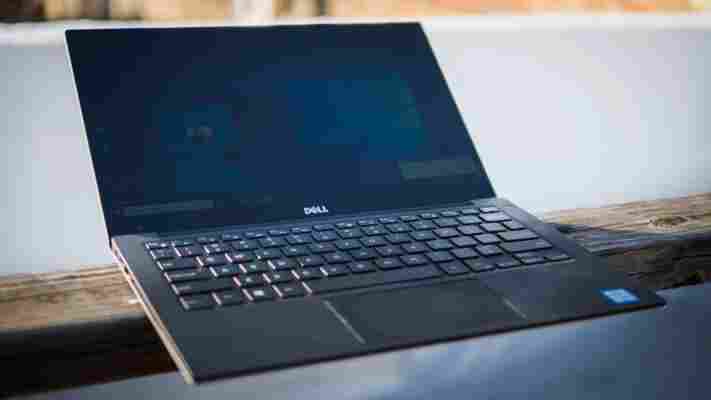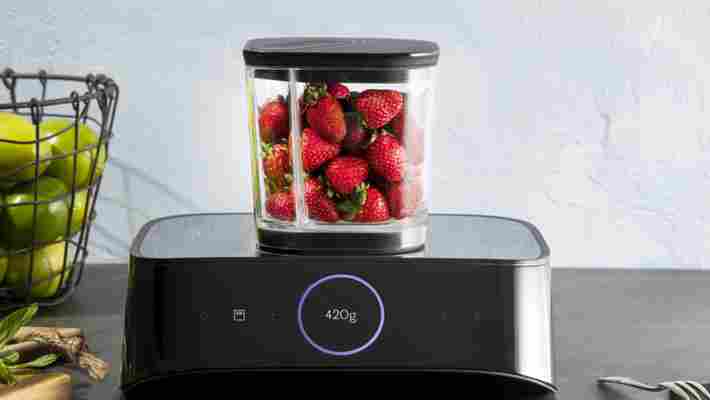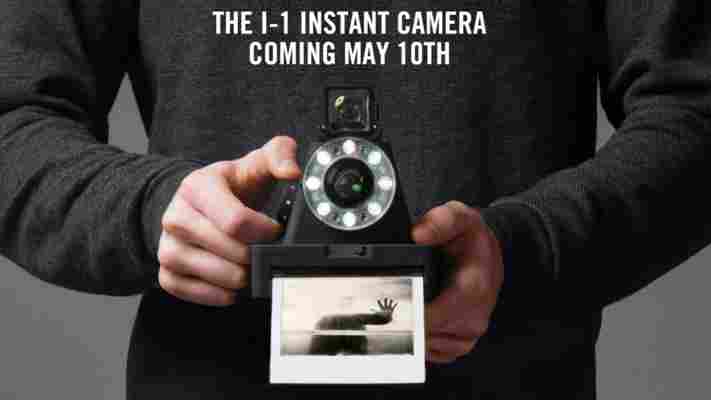Review: Dell’s XPS 13 is a nearly perfect ultraportable
Apple’s MacBooks have long been the gold standard all laptops are measured against. What’s ‘best’ obviously varies according to individual needs, but critics and college lecture halls alike seemed to agree for the past several years.

Mainstream Windows laptops then usually went one of two routes: copy Apple for its proven methods, or, as is more common nowaday, do something crazy to differentiate themselves.
Dell’s XPS 13 did neither, yet still made waves when it was originally announced in November. It was a remarkable achievement for a company not particularly known for its design chops, thanks to the laptop’s ridiculously small bezel and excellent build quality, though it had some some hardware kinks that detracted slightly from the experience.
Since then, it’s been refreshed to work out most of the hardware issues and bump the processor to notably more efficient Skylake processors. Having used the refreshed XPS 13 for a couple of months now, it’s hard to argue that it’s not the best traditional laptop money can buy.
The Dell’s 13.3-inch display is its crowning jewel . I’d knew what to expect from photos, but I might have just let out a little ‘woah’ the first time I turned it on. Seriously, the top and side bezels are tiny. The overall effect is that it feels like the display is floating in mid-air right in front of me, which makes it awesome for editing photos or watching movies.
Speaking of image editing, the display is really accurate to my eyes, too. Dell provides two options, both with the InfinityEdge design: A glossy touch-screen QuadHD model (TKTK ppi), and a matte 1080p screen.
I preferred the former for its resolution and slightly better color accuracy, but its worth noting the 1080p display gets a bit brighter and provides a couple more hours of battery life. Unless you spend your day editing photos or graphics, or just really like poking at the screen – the only way to convert the XPS 13 to a tablet is with power tools – you’ll probably be just fine with the 1080p model at this size.
Ignoring the bezels, it’s not quite the best panel I’ve seen on a laptop this size – that honor still goes to the Surface Book . But then again, I’m a photographer who values color accuracy, and I prefer its color signature and sharpness than over the somewhat duller display on my MacBook.
Prettiness aside, the miniscule bezels actually have a very practical benefit: size-reduction. Dell isn’t lying when it claims this is a 13-inch laptop in an 11-inch chassis. The best thing about it is that Dell manages the size reduction with almost no adverse consequences.
First up, the build quality is right up there with the very best. Unlike many devices of the day, the XPS 13 is not a continuous piece of metal of and glass. Instead, the XPS 13 mixes metal with carbon fiber layered with a soft-touch finish on top. I’m all for it, as it turns out wresting your wrists on rubberized material while typing is a lot more comfortable than hard metal.
Speaking of typing, the keyboard is pretty good as far as ultraportables go. Travel is a little shallow, but the keys are nice and springy, with no flex. I’d rank it similarly to the MacBook Pro or Lenovo’s Yoga series, though behind ThinkPads and the Surface Book.
The touchpad is just as good. Just a notch or two behind behind my MacBook Pro’s – which is to say as good as any Windows laptop, and a fair bit improved over the Broadwell XPS 13.
The laptop is still plenty thin; it’s tapered, but on average about the same thickness as a 13-inch MacBook Pro. In that space it manages to fit a standard amount of ports for its category: an SD card slot, two USB 3.0 ports, and USB-C port capable of Thunderbolt 3 connectivity.
That thunderbolt 3 spec is worth noting, as it means you can easily add an external graphics enclosure for the XPS3 once they become more readily available, or any number of accessories (you’ll need one for HDMI, which Dell dropped for USB-C in this refresh). Also, though the laptop has a standard power brick, Dell says you can charge it through USB-C too in a pinch.
Even the downwards-firing speakers are excellent, with a surprising amount of volume, low-end presence, and stereo separation for a laptop this size.
Pretty much the only serious design caveat is the unfortunate webcam placement – it’s under the display, which will make for an unflattering view up your nose during your next Skype session. I can’t help but wonder whether Dell couldn’t just make the top bezel a smidge thicker (or the camera a smidge smaller) to accommodate a proper angle.
The XPS 13 has standard specs for its weight class and price. I reviewed the Skylake Core i5 model with 8GB of RAM, which will likely be the most popular option.
Plenty of benchmarks are available for XPS 13’s Core i5-6200U processor, and in that respect it performs similarly to other Skylake laptops. That is to say, good enough for your everyday needs, and striking a good balance between performance, price and battery. It’s also a fair bit improved over the Broadwell XPS 13.
Though processor upgrades tend to make headlines, the XPS 13’s upgraded storage will likely have more of an impact on performance. The old SATA drive has been replaced by a PCIe M.2 NVMe drive. In English, that means the drive is much faster, which is particularly useful for this like photo and image editing that require constant reading and writing to storage.
Of course, with no dedicated graphics, you shouldn’t expect much in terms of gaming, but Skylake does provide a substantial bump over the older Broadwell chip. Less demanding titles like Portal 2 and Counter-Strike: Go can maintain smooth framerates at low settings, but you certainly won’t be playing anything from this decade at the native 3200 x 1800 resolution.
That said, it’s worth noting that we’re living in a new era for gaming on laptops. The XPS 13’s Thunderbolt 3 specification means that it (and any other Thunderbolt 3 laptop), can adapt a full-fledged desktop graphics card using a compatible external adaptor like the $499 Razor Core.
External graphics significant additional investment, but it’s great to at least have the option if you want the power at home, but portability on the go. It could also susbtantially improve performance on GPU-accelerated software.
Dell keeps the XPS 13 mostly free of bloatware, except for one piece of software: McAffee. Though I normally remove bundled anti-virus software immediately, it was particularly laughable when McAffee suggested I used Internet Explorer instead of Edge . Other software is mostly just Dell-specific tools for updates and diagnostics.
I did find the included Dell Audio software to be somewhat annoying. Aside from constant alerts when you plug in headphones – oh I didn’t realize I didn’t realize I jut plugin in my headphones Dell, thanks for letting me know – it also saves a single audio preset for both speakers and headphones.
That’s annoying because using the default speaker preset is essential for getting proper volume and bass response from the speakers, but it sounds terrible when headphones are plugged in. I often found myself having to disable the feature when switching between the speakers and my headphones.
Battery life is strong. I found myself averaging around six or seven hours under my typical usage. That might not sound like much, but my typical usage is very heavy, so I came away impressed.
It’s not quite the longevity managed by my Surface Book, but very similar to my MacBook Pro.
As always usual, using Firefox or Edge provided significantly better battery performance than Chrome – here’s to hoping Microsoft hurries up with those extensions .
You’ll also definitely want the FullHD model if battery life is really important to you. Dell claims 18 hours of video playback; half that number would still be impressive. The touchscreen model should last around 11 hours for video.
The XPS 13 doesn’t flip around, come with a detachable screen, or do anything particularly new for a laptop. And it’s refreshing.
Don’t get me wrong, I’m all about the imminent 2-in-1 revolution as Windows 10 becomes more touch-friendly, so the Surface Book remains my top choice if you’ve got the money to spend.
For those who simply want a laptop that’s good at being a laptop, the Dell XPS 13 gets a great keyboard and trackpad, impressive performance and battery life, and a fantastic display that allows it to fit all that in a body smaller than any competitor. I was left wondering why no one else has done it before.
That leaves the price, where things get a bit more complicated, as there isn’t a direct comparison. The laptop starts at $799, but that only includes 4GB of RAM, a Core i3 processor, and a slower 128 GB SSD.
The most popular configurations will likely be the i5 models with 8 GB of RAM and 256 GB of storage; you could buy the non-touch model for $1,099, or spend $1,399 on the touch screen variant.
But while the choice is appreciated, it’s worth noting you can get the nearly the exact same specs on a Lenovo Yoga 900 for $1,049 – and that includes the high-res touchscreen.
Still, Dell is positioning its laptop as premium traditional laptop a-la MacBook Pro, and its screen-to-size ratio alone make it a unique offering that’s hard to price.
The XPS 13 may not be the most forward-looking device on the market, but Dell may have just created the new gold standard for other laptops to measure against. Let’s just hope they fix that webcam.
Silo is part Amazon Echo, part vacuum sealer, all crazy
Here’s something that I think is true (but also isn’t true). Somewhere, there’s a dark basement with a monkey and a typewriter. Amidst flinging his own shit and screeching hysterically, the monkey spends his days pounding furiously on that typewriter. Then, at the end of each day, someone picks up the papers strewn haphazardly across the floor and types them into Kickstarter, all in the hope that it’ll land them their millions.

At least, that’s my theory of how Silo came to be, which is part vacuum-sealer, part Amazon Echo.
Yeah, you read that right. Weird, isn’t it? Like Doug Hutchinson and Courney Stodden, this is a most unlikely marriage. But unlike Doug Hutchinson and Courney Stodden, the Silo kinda makes sense and, dare I say it, could work?
First, the vacuum sealer part. Suppose you’ve got some leftovers that you don’t want to turn into your own personal penicillin colony: the Silo lets you put the food in a plastic Tupperware-esque container, and then, like a wildly inappropriate joke at a polite dinner party, sucks the air out. Through deep vacuum sealing, you can preserve the freshness of a bagel for up to 10 days.
The fact that the Silo vacuum seals stuff isn’t particularly impressive, because those things are common as muck. You can get one on Amazon for slightly over $20.
What makes Silo special is the marriage with Amazon Alexa, allowing you gruffly bark commands at the device. You can quiz it on how much food you’ve stored, as well as how long you can reasonably expect stuff to last.
The device also comes with spoilage notifications telling users when to eat their stuff, and when to throw it away, lest they spend the rest of the weekend chained to the toilet passing bowel movements that look like they came straight from the set of an Eli Roth movie.
The device is also a full Alexa-powered speaker, giving the user access to all their usual skills. The Silo can, for example, read you recipes or tell you the news.
Silo is currently being crowdfunded on Kickstarter. At the time of writing, there’s roughly a day left to back the project, which has already raised over $1 million. That’s impressive considering it initially only sought $80,000 from punters.
If you’re tempted to back it, you can find it here . As with any crowdfunding campaign, there’s an element of risk, but if the developers behind Silo pull through, units will make their way to backers by July next year.
This camera lets you shoot real Polaroid film through an iPhone app
The Impossible Project made wave years ago when it touted bringing back Type 600 Polaroid film through an extensive reverse engineering process. Now the company is releasing its own instant film camera – and it’s a fair bit more modern than your might expect.

The I-1 camera accepts either Impossible type 600 film or Polaroid 600 (if you have any lying around – it’s discontinued), which is expected. Less modern are its other features:
A ring flash that can change intensity based on ambient light and focus distance.
USB charging
A Bluetooth-based iOS app with manual control over aperture, shutter speed and more.
Remote shooting, effects like double and long exposures.
The camera goes on sale on May 10 for $300 – that’s a bit more expensive than alternatives like the popular Fuji Instax, but the connected features make it worth a look. In the meantime, check out some samples:
Update: The I-1 is now available on Impossible Project’s site for $299.99.
Via PetaPixel
